Snowshoes
Snowshoes, one of the oldest forms of transportation around, are also one of the easiest to use. If you can walk, you can snowshoe. And since you decide how fast and how far you go, snowshoeing is great exercise for anyone who wants to get out and enjoy the quiet beauty of winter. It's also easy and relatively inexpensive to get started snowshoeing, since the only equipment necessary is a pair of snowshoes and appropriate footwear (although adjustable poles and waterproof gaiters are recommended).
Deciding which snowshoes to buy may not appear simple though due to the wide variety of models available. Read our top picks and tips below and to cut through the confusion and choose the right pair for you.
On This Page
Types of Snowshoes
Top Picks
How we choose: The best snowshoes highlighted here were selected based on 1,056 reviews of 110 products. Our top picks are those that are readily-available in the United States and have received the highest overall ratings from reviewers.
How we test: Trailspace is powered entirely by our community of readers. The reviews posted here reflect the real-world experiences of outdoor enthusiasts just like you.
If you've used a snowshoe that you think should be listed here, please share your experience.
Disclosure: Trailspace never accepts payment for gear reviews, product placement, or editorial coverage. When you buy through affiliate links on our site, Trailspace may earn a small commission, which helps cover the costs of running the site.
MSR Lightning Trail
New for Fall 2022, this is an early look at MSR's Lightning Trail snowshoes updated with new Paraglide bindings. A rugged, but lightweight shoe meant for rolling terrain. Great for folks who won't be climbing mountains and now easier to get on and off your feet.
Reasons to Buy
- New Paraglide bindings are super easy
- Light on the feet
- Good traction on crusty trails
- Solid construction
- Flexible deck
Reasons to Avoid
- Heel traction bar location?
New shoes, old snow MSR has been making great snowshoes for a long time, but that doesn't stop them from trying to make them better. In recent years they have changed the bindings on their Lightning Ascent and Revo Ascent models to use what they have named the new Paragon binding. Employing a flexible mesh panel that wraps about the front of the foot they reduced the number of strap connections to two. Now they have taken that same approach to create the Paraglide bindings which will be coming to the Lightning Trail, Revo Trail, and Evo Trail shoes for Fall of '22.
Read more: MSR Lightning Trail reviews (2)
Tubbs Flex ALP
I will review my shoes, the 24 inch model, but my husband has the 28 inch version, and his review is the same as mine...we love these snowshoes! We have found them a nice step-up from our older Tubbs models (Adventure 25 and Eclipse 30), and have been excellent in our uses this year, on varying terrain and snow conditions.
Reasons to Buy
- Heel lift
- Flex deck
- Binding system
- Excellent traction
Reasons to Avoid
- Sometimes a metallic clicking noise, especially on crust/hard pack
We snowshoe on sometimes steep and icy trails, and sometimes trails with unpacked or mushy snow. I have found the design and materials on these snowshoes to be excellent, and they have greatly increased my confidence on tricky terrain,especially when traversing. The extended traction is wonderful,and an improvement from my old Tubbs, which had only toe crampons. The Flex Alps are light, and the binding system holds them securely...I have found no lateral "wiggle". The heel lift is also a feature new to us, and it seems like a nice advantage for some of our steep uphills.
Read more: Tubbs Flex ALP reviews (3)
Tubbs Flex TRK
I bought these this morning because after weeks of snow here in Boston they were the only snowshoes available at the local EMS store. I just went out for an hour and a half tromp in the woods. They passed the first test easily, which was whether I could secure my boots in the bindings. The adjustments both around the toes and on the strap that runs behind the heel were simple and straight-forward. The heel strap is made of some sort of rubberized material. You adjust it by stretching the strap over a metal prong.
Read more: Tubbs Flex TRK reviews (3)
Tubbs Wilderness Series
Impressive hiking/backcountry snowshoe from long-time maker of snowshoes, Tubbs. Great weight-to-size/flotation with easy on and off buckling mechanism. Heel lift for extended climbing and fairly aggressive traction make for an enjoyable day hiking the snow covered trails here in Colorado.
Reasons to Buy
- Lightweight
- Good traction for up/down hills
- Easy buckling mechanism for on/off entry
- Flotation rating seems spot on
- Heel lift for extended climbs
- Platform material and construction appear durable
Reasons to Avoid
- None so far, but I will update this post at the end of the season
- Minimal perpendicular gripping at the heel area to lessen downhill slippage
- No perpendicular crampon under the heel
I purchased these snowshoes in mid-January after it had been snowing quite a bit during December. But then it turned warm, unseasonably warm here in the Denver area with 50s-70s for the rest of January and early February. The place I had planned to christen them turned into a snow/mud trail so I kept waiting for the weather to turn back to winter. Last weekend, a buddy of mine who is a volunteer with the U.S. Forest Service, and I met up to snowshoe the 5.5 mile out and back to Brainard Lake (northwest of Boulder).
Read more: Tubbs Wilderness Series reviews (7)
Explore more top-rated snowshoes from Tubbs:
Redfeather Hike
As a relative novice to snowshoeing, I found the Redfeather Hike to be easy to put on, natural to hike in, and comfortable. They outperformed the snowshoes I rented from REI.
Reasons to Buy
- Easy to put on and adjust
- Easy to walk in after only a minute or two of practice
Reasons to Avoid
- I don't get to snowshoe enough!
Once a year, I get to attend a conference in Boulder, CO. Each year, the conference organizer (Tom) invites attendees to arrive a day early for a bit of snowshoeing in the front range of the Rockie Mountains. My first year, I rented snowshoes from the local REI (I'm sorry to say, I can't remember the brand). They were "okay," but were not easy to put on or adjust. The next year Tom loaned me a pair of 30" Redfeather Hike. I'm pretty much a novice, but Tom snowshoes regularly. He takes newbies out regularly, and the back of his truck is filled with 5 or 6 pairs of Readfeather Hike.
Read more: Redfeather Hike review (1)
MSR Evo Trail
About the only thing that would hurt these snowshoes is throwing them in a fire! They're made of bomb-proof, injection molded, high impact plastic and can take more abuse than anything I've seen. Best for on-trail hiking but be forewarned — plastic is LOUD, especially on a packed trail.
Reasons to Buy
- Reasonable price
- Outstanding quality
- Great traction on icy trails
Reasons to Avoid
- Heavy
- Loud
- Have to take them off to attach tails
I like getting the cons out of the way first so I can go on and list all the really good stuff. So, here you go... Con: These snowshoes are heavy. They're made of high impact, injection molded plastic, so once you put the shoe, the deck and the bindings all together, you're looking at over 3.5 pounds. Definitely not the lightest shoes out there... Con: Being made of plastic, they're also very loud on packed and icy trails — so loud in fact, it's difficult to hear your hiking partner over them.
Read more: MSR Evo Trail reviews (3)
MSR Lightning Ascent
The MSR Lightning Ascent snowshoe is a very well designed go-anywhere snowshoe with a new Paragon binding design that lives up to its name. The Lightning Ascent's design has a number of aggressive features that really enable this snowshoe to be used confidently in the most challenging crusty and icy conditions. The new Paragon binding is simple to use and comfortable in use. This really is a great snowshoe option for someone looking for a durable design that can be used in any conditions.
Reasons to Buy
- Simple binding adjustments
- Very aggressive traction features
- Not noisy like all-plastic deck models
- Incorporates a heel support that can be operated with a trekking/ski pole
- Tails are available for extra flotation
- Paragon binding supports a wide range of footwear sizes
- Spare binding parts are available and some are field replaceable
- Designed by a manufacture that will be around to provide support well into the future
Reasons to Avoid
- Decking material absorbs moisture
Overview The MSR Lightning Ascents are positioned as MSR’s top of the line snowshoe with a focus on being an ultralight aggressive design that can be used in challenging technical terrain. The latest version of the Lightning Ascent now comes with MSR’s new Paragon binding which MSR claims to offer greater comfort and foot control. The MSR Lightning Ascent is actually one of three models of the MSR Lightning snowshoe designs and I provide a brief comparison of the three models at the end of this review.
Read more: MSR Lightning Ascent reviews (25)
Explore more top-rated snowshoes from MSR:
Crescent Moon Big Sky
Good all around shoe that excels in backcountry use. Fresh snow and off-trail adventuring benefit from the excellent float. Easy on and off with innovative one-handed binding.
Reasons to Buy
- Easy to use binding
- Great float
- Tapered tail
- Good traction in most conditions
- Pretty paint job :)
Reasons to Avoid
- Flexible deck limits traction at times
- Pretty paint flecks in the snow :(
The Gold 10 Backcountry snow shoes are part of a line by Crescent Moon, a Colorado company that has been at it since 1997. They manufacture a really wide variety of snowshoes there and have stayed on top of changing times and markets with the recently Trailspace Review Corps reviewed EVA All Foam shoe. The Gold 10s are a more traditional shoe, but with some unique innovative twists. Specs: Weight 5.43 lbs / pair on my scale Dimensions: About 31" long and 10.5" at the widest point 6063 Aluminum tube with polyurethane deck Bindings: Let’s start here because that is where the snowshoeing starts and ends.
Read more: Crescent Moon Big Sky review (1)
Northern Lites Backcountry
Northern Lites still offers the Backcountry for $240. I've had mine for years, and agree they are one of the lightest and easiest to use in the backcountry. The only model that's better for bantam weight folks is their Elite (8x25) if and only if you are under 175 lbs with a backpack!
Reasons to Buy
- Light
- Easy to maneuver
Reasons to Avoid
- Can take a little practice to get used to 9x30
For more aggressive slopes, I'd love a pair of their Predator series, which replaces their aluminum cleats with steel in more places. But the overall Northern Lites build is the same...much lighter frame than other brands, plastic edge clamps that both provide some extra traction and keep the decking material from wearing through where it wraps around the frame. The strap system is sturdy though takes practice if you don't want to take gloves off, but once you're in they track well and are easy to walk in.
Read more: Northern Lites Backcountry reviews (2)
Crescent Moon Yellowstone
This is a great shoe when you use it for what its made for -- running. I am an avid runner and I decided I would try out a pair of these "running snowshoes" that everyone was talking about. They were definitely worth the price. They have one of the fastest binding systems and have a very aggressive bottom. The first time I strapped them on I did not even know they were on my feet. They are as light as a feather and are great. I would just recommend not bringing them to the mountain with you.
Read more: Crescent Moon Yellowstone review (1)
More Snowshoes
Trailspace reviewers have shared 1056 reviews of 110 different snowshoes. Narrow your search and view more specific snowshoe recommendations in these categories:

Recreational Snowshoes
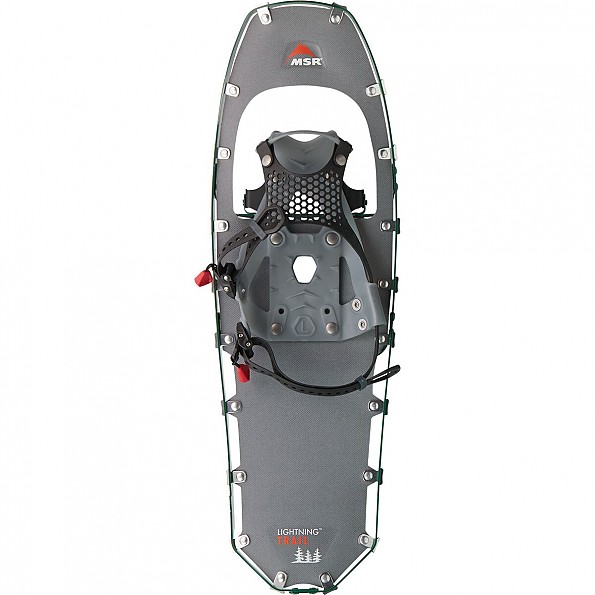
Hiking Snowshoes

Backcountry Snowshoes
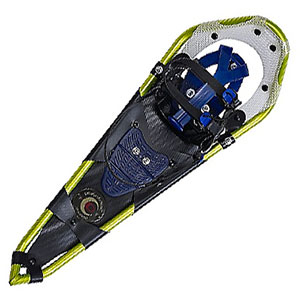
Running Snowshoes

Wooden Snowshoes
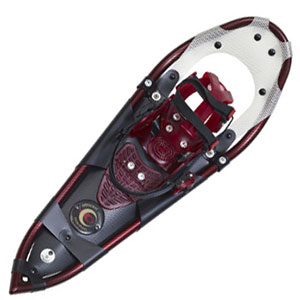
All Winter Gear
How to Choose Snowshoes
What Type of Snowshoes?
First, choose the type of snowshoes based on what level of activity and type of terrain you'll be tackling most of the time. Do you plan on walking around the local park or bagging backcountry peaks? Do you want to run on trails for winter fitness or bushwhack through densely wooded forests? Most snowshoes will work in a variety of snow conditions, so you won't be limited to only one activity, but different snowshoes work best in different conditions. Choose based on your predominant activity.
-
Recreational Snowshoes: These snowshoes, which include models for beginners, are suited for anyone who plans on casual snowshoeing on easy to moderate terrain, such as packed trails, rolling hills, and firm snow. Recreational models are usually the least expensive.
-
Hiking Snowshoes: These all-terrain snowshoes are more rugged than recreational models and work well for moderate day hikes both on- and off-trail. They’re equipped to handle steeper terrain, although you’ll want backcountry models if you regularly take on challenging ascents. Hiking snowshoes suffice for the majority of winter day hikers though.
-
Backcountry Snowshoes: Backcountry snowshoes are designed to tackle steeper terrain, especially off-trail routes, over longer distances. They offer the most flotation, aggressive traction for steep ascents and descents, and bindings that accommodate larger footwear (like mountaineering, ski, or snowboard boots). Backcountry models tend to be the most expensive due to their more technical features and stronger materials.
-
Running Snowshoes: These lighter weight and smaller models are tapered to allow you to run with your natural stride over packed or groomed trails. Snowshoe running is a great winter workout that burns even more calories than regular running. If you’ll be competing in USSSA races, make sure your model is USSSA race approved.
-
Women-Specific Snowshoes: Many manufacturers offer women-specific snowshoes with lighter materials, bindings sized for women's footwear, and frames ergonomically shaped for a woman's gait and shorter stride.
-
Youth Snowshoes: With snowshoes available for preschoolers to young teens, the whole family can enjoy winter together. From the youngest snowshoers to older kids, there are models that look and perform just like Mom and Dad's but are built specifically for them.
What Size Snowshoes?
Snowshoes come in a variety of sizes and lengths. The larger a snowshoe's dimensions (length and width), the greater the amount of surface area underfoot, which is the key to not sinking into the snow. The more surface area your snowshoes have, the more flotation you have.
Manufacturers offer some models of snowshoes in several different lengths. What size snowshoes you choose depends on a combination of two factors—your weight and the snow conditions.
-
Weight: How much do you and the gear you'll typically be carrying weigh? The more you and your gear weigh the bigger the snowshoe you'll need. Every snowshoe manufacturer has a recommended weight range for each model of snowshoes. Consult this information, which usually can be found on manufacturers' web sites, in retailers' product descriptions, or on the snowshoe's hang tags.
-
Snow Conditions: What type of snow will you typically be traveling over—packed trails or deep, dry powder? Dry, powdery snow requires more flotation, and thus larger snowshoes, than firm or packed down snow.
If in doubt, choose the smallest model that will support you and your gear in the type of snow you'll typically meet. Smaller models have less flotation than larger ones, but are lighter and more maneuverable for hiking through trees or running. Some snowshoes also offer removable tails for added flotation when you need it, giving you more flexibility.
Snowshoe Features
Once you've narrowed your choices down to what type and size of snowshoe you'll need, consider the components and features on different models and decide which you need or prefer.
-
Frames and Decking: While some manufacturers still offer traditional wooden frame snowshoes, most snowshoe frames are made from aluminum or plastic materials, with a synthetic decking. Aluminum models are lighter and more durable than wood, and easier to maintain. Plastic models are the lightest of all.
-
Bindings, which secure your footwear to the snowshoes with adjustable straps, should be easy to use so you can get snowshoes on and off without having to remove gloves or mittens in the cold. Bindings are either pivoting or fixed. Pivoting bindings allow for a more natural gait and an easier time climbing hills or kicking steps. Fixed bindings don't pivot very much, but make it easier to back up or step over obstacles, since the snowshoe's tail won't flop around. Most bindings will work with a wide variety of footwear, however some are designed specifically for larger mountaineering or ski boots, or to snugly fit running shoes. So make sure the bindings will work with your preferred footwear.
-
Most snowshoes provide some form of cleat, crampons, or traction bar for better grip on steep or icy snow. Heel and toe crampons underfoot allow you to climb or descend steeper slopes by biting into the snow and ice. Traction bars on the underside of the snowshoe decking also help reduce slipping, although they don't have the same ability to grip as crampons. Mountaineering snowshoes offer the most aggressive traction of all.
-
Some manufacturers, like MSR, offer removable flotation tails, which provide extra flotation for deep powder or when carrying heavier loads. These versatile add-ons allow you to adapt the snowshoes to a wider range of snow conditions and loads.
Next Steps
Want to try snowshoes before you buy? Consider taking advantage of local snowshoe demo opportunities, such as Winter Trails Day, an annual January event that offers children and adults new to snow sports the chance to try snowshoeing and cross-country skiing for free.
Ready to choose a pair? check out Trailspace's snowshoe users' top picks and soon you'll be strapping on snowshoes at the first sight of fresh snow.
Other Types of Winter Gear
Find more winter gear reviewed in these related categories:
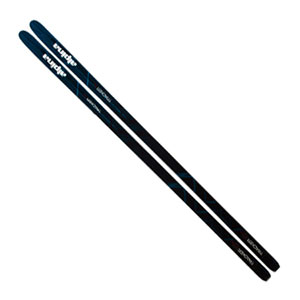
Nordic Touring Gear
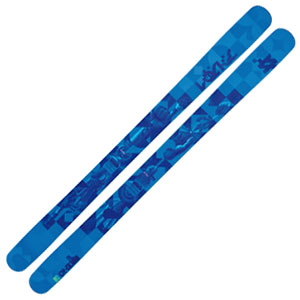
Alpine Touring Gear
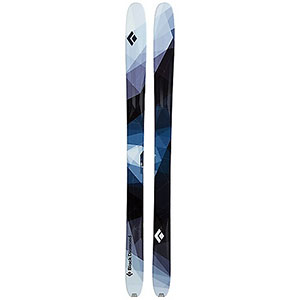
Telemark Gear

+7 more types
Review Your Outdoor Gear
If you've found this site helpful — or if we've missed something important — please consider paying it forward by some of your favorite outdoor gear.
Why? From professional gearheads to outdoor novices, everyone has an important point of view to contribute. will support the outdoor community and help others find the best gear.
Trailspace reviewers are outdoor enthusiasts like you: hikers, climbers, paddlers, backcountry skiers, and trail runners who share our experiences with the gear and clothing we rely on to get outside. Learn more about Trailspace



